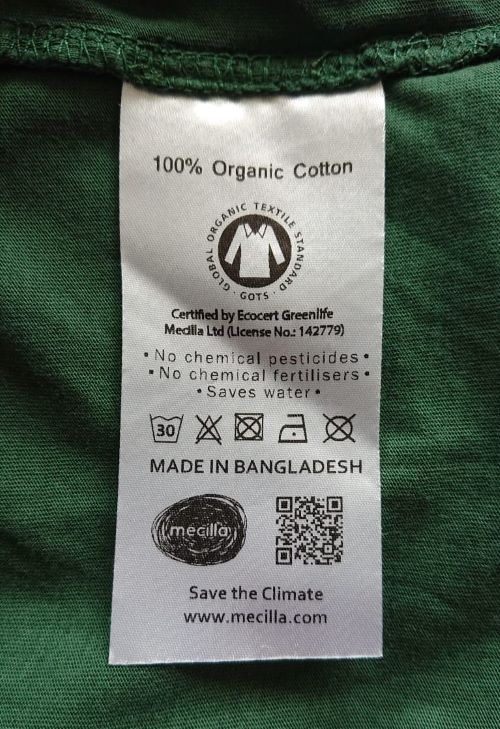Fast fashion is attractive to many due to its low price and rapid trend cycles, which also changed the traditional clothing consumption pattern. Even though the quality of fast fashion clothing is generally lower and less durable, price and style remain the most important purchasing criteria for the consumers. However, producing clothes requires certain cost so why brands are able to offer such a low price on these clothes? In order to reduce cost, the manufacturer must try to cut back on material and labour costs that may lead to exploitations of labour as well as the environment.
Starting with materials, manufacturers often use the cheapest and the most efficient chemicals and materials to produce clothes without considerations for environmental pollution. According to the report from Greenpeace in 2012, endocrine disrupting chemical NonylPhenol Ethoxylates (NPE), used in textile manufacturing as a cleaning, dyeing and rinsing agent, is hazardous and harmful to both environment and human beings. Sewage with NPE may be pumped into rivers with marine animals; human beings then eat such marine animals exposed with NPE which may interfere with the body's endocrine system. Therefore, the use of NPE for textile manufacturing in Europe was banned while developing countries with no related policy kept using NPE to maintain a high production rate. In addition, maximizing profit margin often lead to lower quality standards. People who had purchased from fast fashion brands may found that those clothes are bit flimsy and doesn’t hold its shape well after several washes. Due to such durability and rapid consumption rate, the worn-out/distorted clothes were often disposed of sooner with little choice.
Another way to reduce cost yet producing more is by exploiting labours. Most textile manufacturers in the fast fashion industry are located in the developing countries such as Bangladesh, Cambodia, Vietnam, etc. Due to the lack of a well-established legal system, there are no regulations towards working hours, salaries and working environment. From the research by SACOM in 2015 and 2016, manufacturers forced workers to work at least 12 hours every day and even tried operating from 0730 to 0100-0200 with just one day off a month. Furthermore, workers are paid by a fixed “piece rate” with extremely low wages that are unable to support their daily life and hence need to work over-time to earn more money. Besides, there are no safety guidelines to protect workers from overheated room temperature, poor ventilation or to provide any protective equipment. In 2013, over 1,000 people were killed and over 2,000 people were injured when Rana Plaza building, a manufacturing factory in Bangladesh, collapsed. The day before the collapse, there were large cracks and an official warning was announced to remind citizens to stay far away from the building. However, the authorities of the textile factory insisted workers to continue which resulted in the large number of casualties, all for the sake of offering attractive prices for consumers of fast fashion.
To discourage these dirty labour exploitations and inhumane sweatshops, we should stop supporting the fast fashion industry by changing our shopping behaviours. We should pay extra attention to the background of a fashion brand by studying news and reports related to its source of materials, manufacturing practices as well as the labour involved in the manufacturing process. We can also choose products that are made with natural materials such as organic cotton and/or natural dye (such as vegetable dyes) and “fair-trade” products that are produced ethnically and eco-friendly by responsible companies and businesses that provide a safe workplace and fair return for their suppliers and workers.
Although the price of environmental-friendly and ethnically made products are often more expensive than fast fashion items, our judgment should not be based on price alone without considerations for the environment and labour behind the products. In the end, consumers should buy the spirit and values of the brands and not just their products.

Sample of organic cotton clothing with certification.
You may know the product of origin and fabric type by checking the clothing labels.
References:
綠色和平 (21st November, 2012), 「速食時裝」愈潮愈污染!. Retrieved from http://www.greenpeace.org/hk/news/stories/toxics/2012/11/fast-fashion-and-pollution/
Students and Scholars Against Corporate Misbehaviour (15th January, 2015), [Investigative Report] Working Conditions in UNIQLO’s China Suppliers. Retrieved from http://sacom.hk/2015/01/15/investigative-report-working-conditions-in-uniqlos-china-suppliers/
Students and Scholars Against Corporate Misbehaviour (20th February, 2016), [Investigative Report] Unveiling The Labour Rights Violations – The Second Investigative Report on UNIQLO’s Suppliers in China. Retrieved from http://sacom.hk/2016/02/20/investigative-report-unveiling-the-labour-rights-violations-the-second-investigative-report-on-uniqlos-suppliers-in-china/
William Gomes (9th May, 2013), Reason and responsibility: the Rana Plaza collapse. Retrieved from https://www.opendemocracy.net/en/opensecurity/reason-and-responsibility-rana-plaza-collapse/

